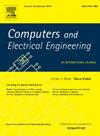An optimized multilayer perceptron-based network intrusion detection using Gray Wolf Optimization
IF 4
3区 计算机科学
Q1 COMPUTER SCIENCE, HARDWARE & ARCHITECTURE
引用次数: 0
Abstract
The exponential growth in the use of network services through the design of various network infrastructures, has led to increased complexities and challenges in the network. A major problem in computer networks is privacy and security breach. Cyber attackers exploit loopholes to infiltrate and disrupt the operation of the network through various attacks. Anomaly-based intrusion detection often employs Artificial Neural Network techniques like Multi-layer Perceptron (MLP) to classify malicious and legitimate traffic. Nevertheless, these techniques are vulnerable to overfitting and require extensive labeled data and computational resources. Consequently, this reduces the accuracy of intrusion detection systems and increases the error detection rate. To minimize the error detection rate of the intrusion detection system, it is necessary to optimize the connection parameters of the MLP neural network such as weights and biases. To this end, we proposed an optimized MLP-based Intrusion Detection using Gray Wolf Optimization (GWOMLP-IDS) to optimize the learning process of the MLP neural network by optimizing weights and biases. GWO aims to select an optimal connection parameter during the learning process to minimize the error rate of intrusion detection. Extensive simulations in Python reveal the effectiveness of the proposed approach in terms of designated performance metrics.
基于多层感知器的网络入侵检测灰狼优化法
通过设计各种网络基础设施,网络服务的使用呈指数级增长,这导致网络的复杂性和挑战性不断增加。计算机网络的一个主要问题是隐私和安全漏洞。网络攻击者利用漏洞进行渗透,通过各种攻击破坏网络的运行。基于异常的入侵检测通常采用多层感知器(MLP)等人工神经网络技术对恶意和合法流量进行分类。然而,这些技术容易出现过拟合,而且需要大量标注数据和计算资源。因此,这降低了入侵检测系统的准确性,增加了错误检测率。为了最大限度地降低入侵检测系统的错误检测率,有必要优化 MLP 神经网络的连接参数,如权重和偏置。为此,我们提出了基于 MLP 的灰狼优化入侵检测(GWOMLP-IDS),通过优化权重和偏置来优化 MLP 神经网络的学习过程。GWOMLP-IDS 的目的是在学习过程中选择最佳连接参数,从而最大限度地降低入侵检测的错误率。在 Python 中进行的大量模拟揭示了所提方法在指定性能指标方面的有效性。
本文章由计算机程序翻译,如有差异,请以英文原文为准。
求助全文
约1分钟内获得全文
求助全文
来源期刊

Computers & Electrical Engineering
工程技术-工程:电子与电气
CiteScore
9.20
自引率
7.00%
发文量
661
审稿时长
47 days
期刊介绍:
The impact of computers has nowhere been more revolutionary than in electrical engineering. The design, analysis, and operation of electrical and electronic systems are now dominated by computers, a transformation that has been motivated by the natural ease of interface between computers and electrical systems, and the promise of spectacular improvements in speed and efficiency.
Published since 1973, Computers & Electrical Engineering provides rapid publication of topical research into the integration of computer technology and computational techniques with electrical and electronic systems. The journal publishes papers featuring novel implementations of computers and computational techniques in areas like signal and image processing, high-performance computing, parallel processing, and communications. Special attention will be paid to papers describing innovative architectures, algorithms, and software tools.
 求助内容:
求助内容: 应助结果提醒方式:
应助结果提醒方式:


